Sri Lanka. Miles long white beaches, grass green tea plantations, breath-taking temples, rough shores and exotic fruits in the tropical heat. Coming home after three weeks backpacking in Sri Lanka, people we talked to asked about the “favorite things” and our highlights. The highlight of Sri Lanka is its diversity. It’s crowded, it is empty, it’s hectic and it is deeply relaxing but backpacking in Sri Lanka always an adventure.
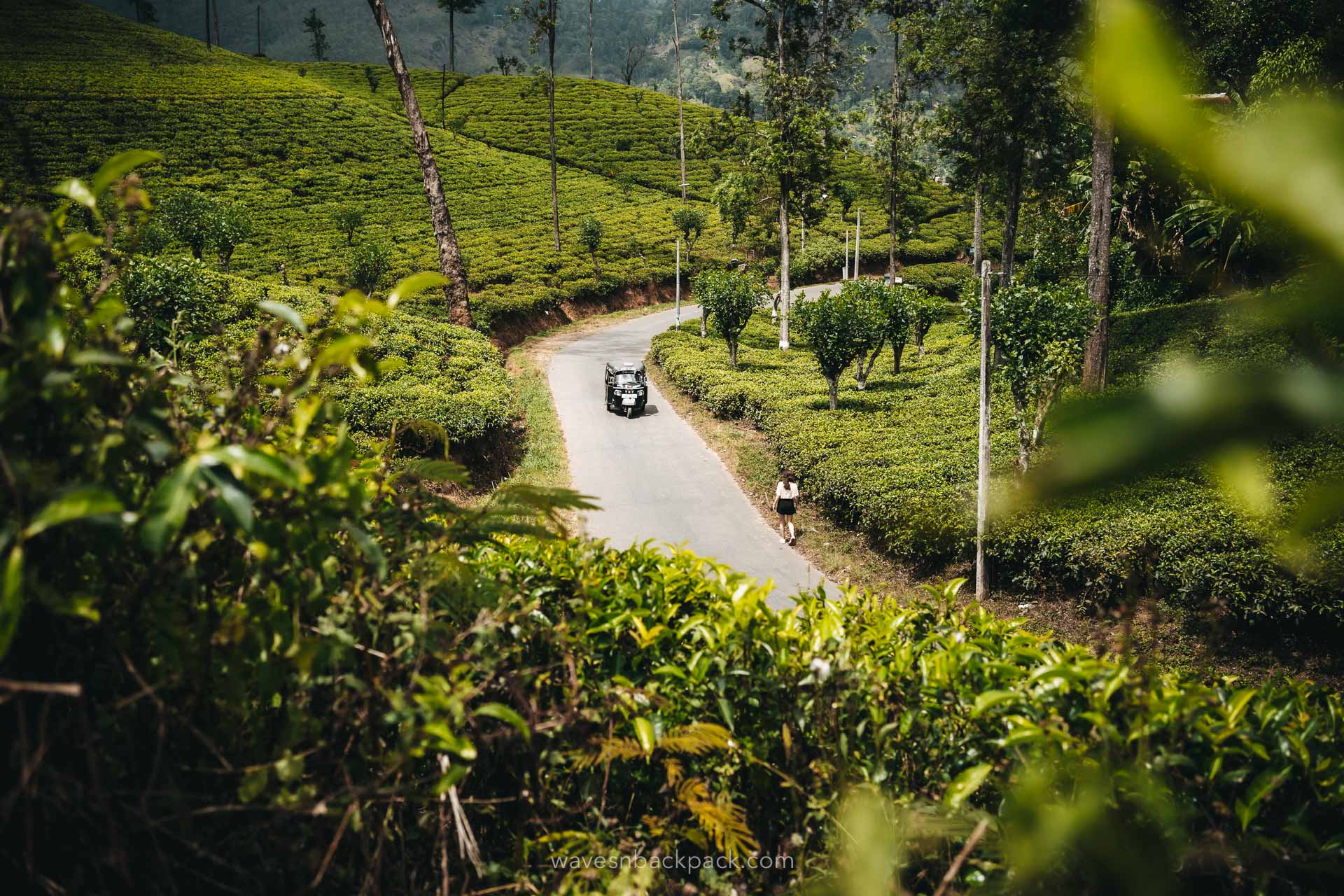
In this blogpost we want to share experiences we did and impressions we had while backpacking in Sri Lanka for three weeks.
Starting off with the description of our route, this blogpost also contains further handy and interesting facts on the tear-drop island, people and culture. Here we not only cover possible advices prior your trip but also recommendations which stops, excursions and sights are a must see and which parts of our trip we would plan differently in retrospect.
Hence, you are well-prepared and your adventure is ready to start!
Table of Contents
Our Route | Entry Requirements | Travel Time & Climate |
Transportation | Food | Accommodation | Sports & Surfing | Language & Communication |
Locals in Sri Lanka | Packlist
Our trip began at Frankfurt airport from where we took the first plane to Muscat, Oman. Seven hours later we arrived and jumped straight on the next four hour flight to Sri Lanka’s capital, Colombo.
We booked our flights extremely cheap at Urlaubspiraten (the German equivalent for Holidaypirates) thus a direct flight was no option, even though it would have been more relaxed. After eleven hours of flights with the airline Oman Air, which we definitely can recommend, we set our feet on Sri Lankan soil the first time.
After leaving the the airport our first impression of Colombo was hectic and overcrowded.
Backpacking in Sri Lanka – Our Route
In the following we will describe the route we took on our three week journey through Sri Lanka’s highlands and along its beautiful coasts. The information provided will help you to better plan your stops and trip time-wise.
Colombo > Hikkaduwa
After one night in our hotel we left Colombo in the next morning heading towards Hikkaduwa. Our thoughts of having sand between our toes faded out the hectic traffic and we got on the train in Colombo Fort to Hikkaduwa. In contrast to what we’ve heard and researched our train ride was totally relaxed, not overcrowded but super interesting. Two hours later we arrived in Hikkaduwa and a Tuk-Tuk brought us to our hostel that was directly at the beach.
Together with our welcome smoothie had a look at the beach and Hikkaduwa started to impress us immediately. Restaurants and bars at the beach invite you to have a drink or some of the great food and enjoy the sunsets over the Indian Ocean. Here we spent two days but haven’t had enough of the beach yet. Hence, we decided to continue our trip further south.
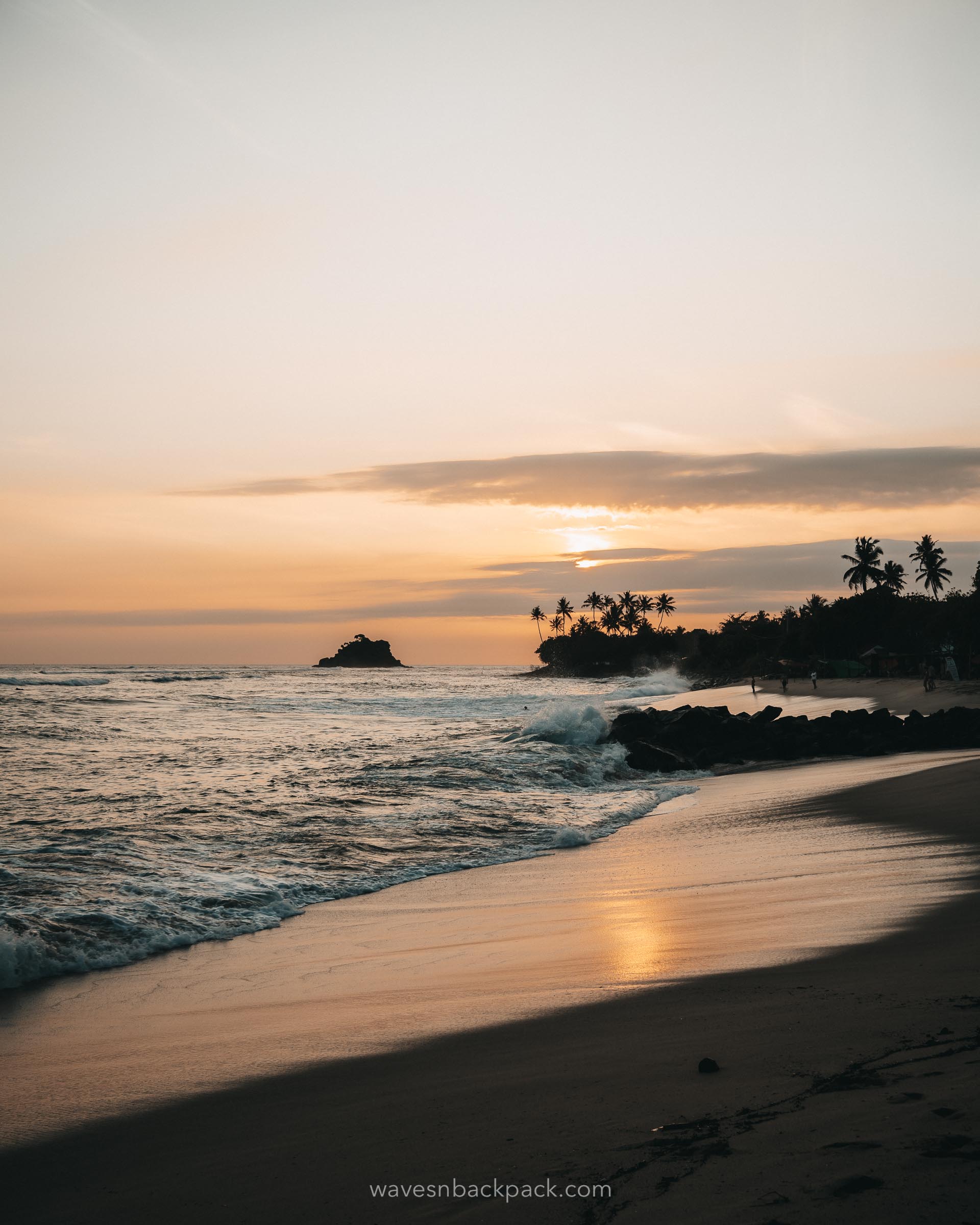
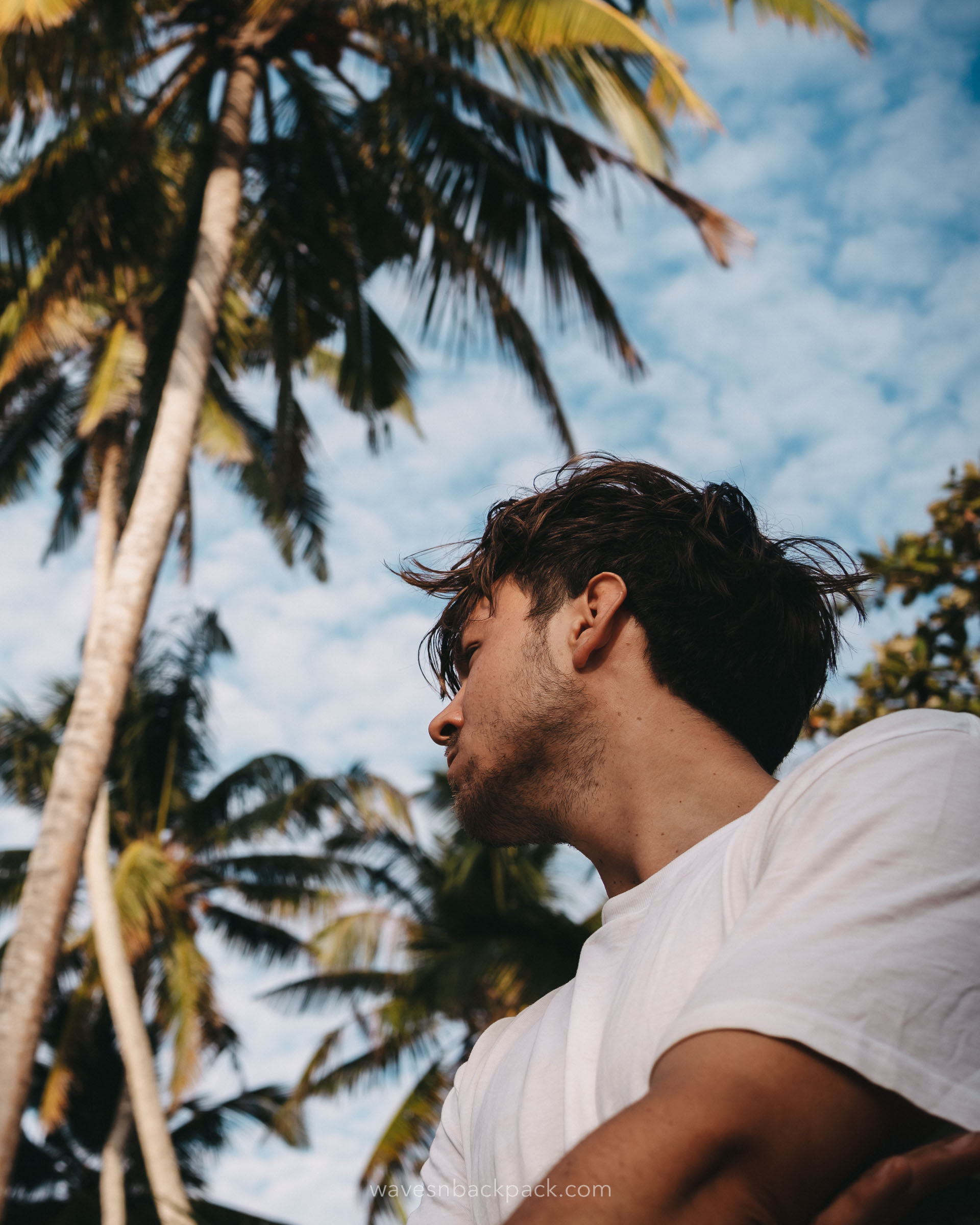
Hikkaduwa > Galle > Weligama/Mirissa
For this trip we took the train in direction to Matara again and stopped after approximately 40 minutes to have a look at Galle to see the old-town and the famous lighthouse. Travel tip here: You can leave your backpacks in a “locker room” at the trainstation. For 100 LKR for each backpack it was safely stored for a few hours. Around 4pm we continued further to Mirissa. Mirissa’s train station is in the middle of the jungle and noticed that we should have better gotten off the train in Weligama.
Continuing the adventure we took a Tuk-Tuk and enjoyed the ride through pristine jungle. Now it was surfing time for five days before we continued our trip in the highlands of Sri Lanka. Most of our time we did not spent in Weligama but at Mirissa’s dream beach, which is roughly 10 minutes Tuk-Tuk ride from Weligama.
Welcome to paradise!
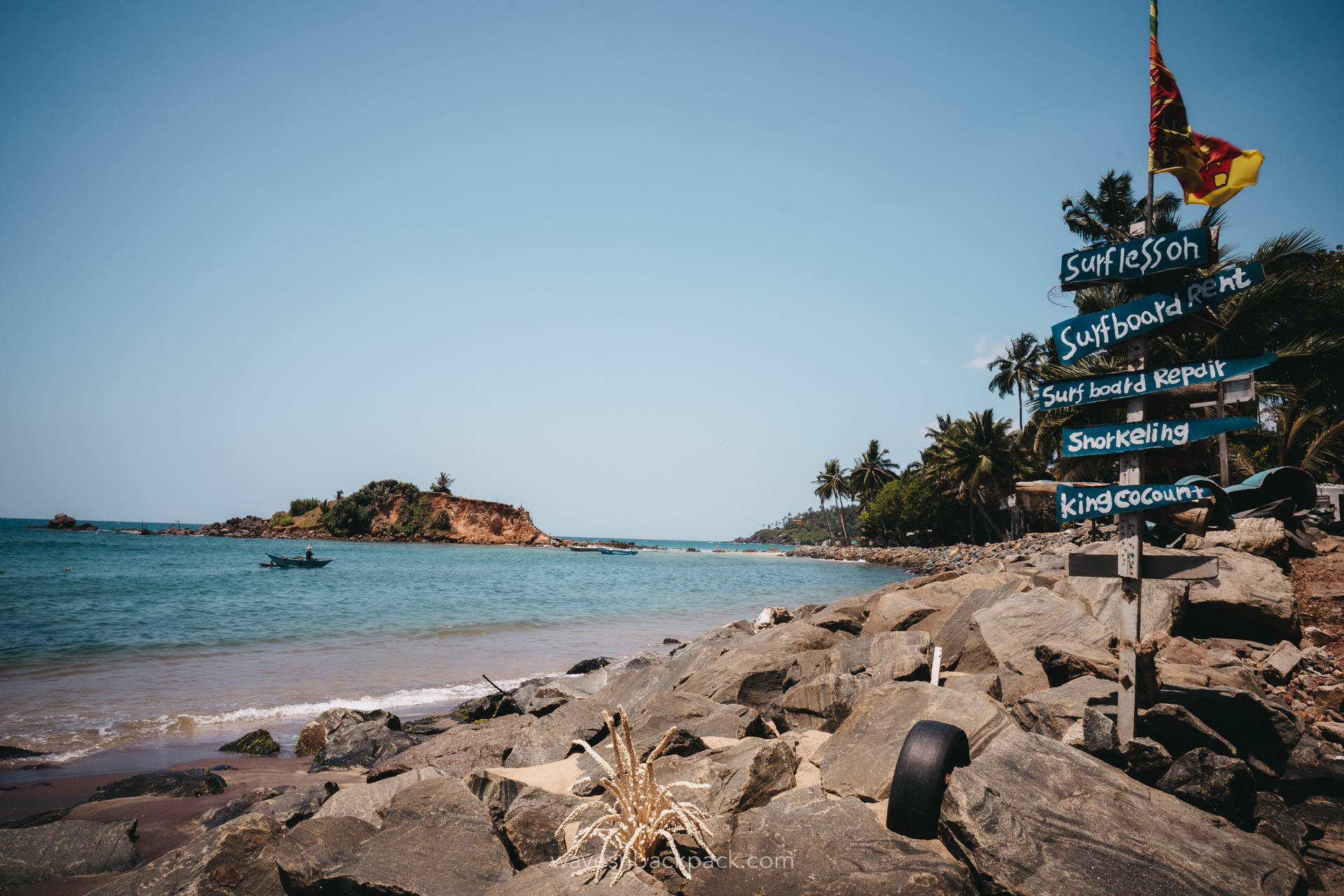
Long, palm-lined beaches with turquoise waves, a small island from that you have a great view, as well as inviting restaurants with sea view.
Most of all Mirissa is famous for its whale watching and everybody on the beach tries to sell it. It’s worth its money if you do not get sea-sick easily. We were lucky enough to see these impressive animals during our tour, which made the early wake-up at around 5 am totally worth it.
Important: to compare different providers and choose the one that appears to act most responsibly towards the animals.

Weligama/Mirissa > Kandy
After our time in Weligama / Mirissa flew by, we continued our trip to Sri Lanka’s highlands, as we wanted to spend sinhalese new year in the mountains and visit one of the national parks.
From Mirissa to the north is harder than from Colombo to Matara because there is no train going. To get to Kandy fast, we just decided for a seven hour train ride to Kandy via Colombo.
Arriving in Kandy we were totally surprised about the hospitality of people here and most of all of our landlord, who treated us like his children. In the next two days we explored Sri Lanka’s cultural capital: Temple of Tooth, Kandy Dance and trolled through markets.
Kandy > Hatton > Dalhousie
In Kandy we learned a lot about Sri Lanka and its culture and then headed to the next highlight of our backpacking tour: Adam’s Peak or Sri Pada Mountain. The best place to start the ascent is the village of Dalhousie. Therefore you take the train until Hatton, and then go by bus or by taxi (which you always can share with other people around).
Dalhousie is tiny and does not have more than a few guesthouses for pilgrims and tourists as well as some small shops. Perfectly fine is to arrive in Dalhousie in the late afternoon, buy some small snacks and drinks for the next day’s hike.
Go to bed early, get up around 2 am and start the exhausting ascent to more than 2,000 m. You will be rewarded!
➳ Also read: Our Sri Lanka Backpacking Highlights

Dalhousie > Nuwara Eliya
With sore muscles in our whole body (but wow, our legs) we headed to Nuwara Eliya after our descent. Here we spent two days for sinhalese new year and relaxed after a few active days in Sri Lanka’s highlands.
Nuwara Eliya > Ella > Uda Walawe National Park
Being totally relaxed after the stay in a nice hotel in Nuwara Eliya we continued to the last inland stop: Uda Walawe National Park. To reach our hotel close to the national park we took the train from Nanu Oya (15 min with Tuk-Tuk) to Ella. The railroad line between Haputale and Ella is considered to be one of the most beautiful in the world.
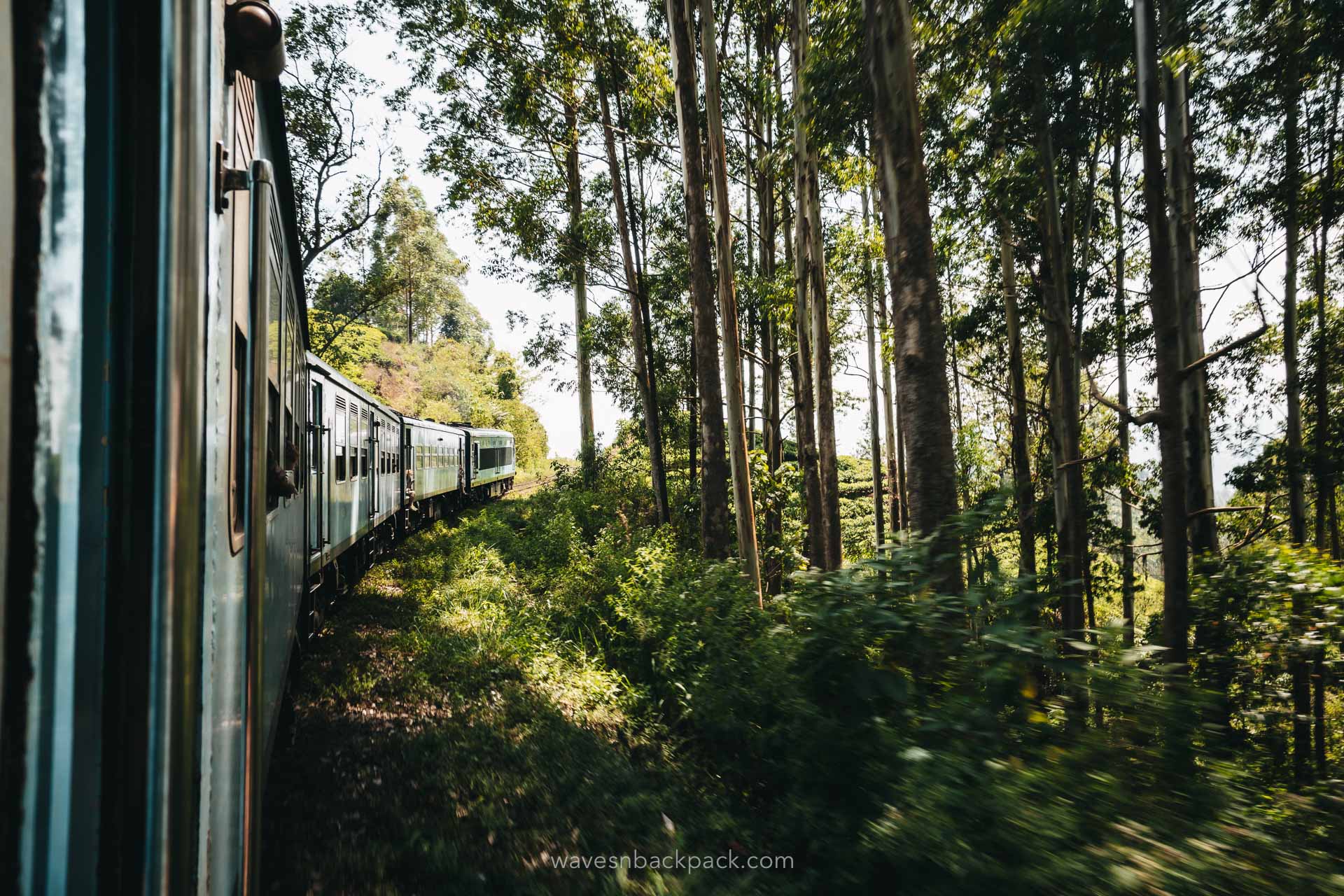
You will see Sri Lanka’s beauty here once again: Tea plantations, ravines, green forests and jungle. Taking this train is highly recommended for every backpacker in Sri Lanka. Next morning our alarm rang again at 5 am, even though this was still supposed to be vacation. Early morning safari and sunrise! Uda Walawe is calling? Have a look here:
➳ National Park in Sri Lanka – Uda Walawe or Yala?
Uda Walawe > Hikkaduwa
The same day we craved for the coast. So, off to Hikkaduwa! Again! Catch some waves, some beer, get some tan and just relax.
We left Uda Walawe one day after sinhalese new year and no busses were going, thus we took a taxi that we booked in Kandy a few days in advance.

Hikkaduwa > Negombo > Colombo
One day before our flight back to Germany we shared a taxi with a German couple, that we met in Weligama, and drove to Negombo for our last night. Negombo is located 40 minutes north from Colombo directly beside the airport and was supposed to be less hectic as Colombo. Sadly, that was our last stop of a wonderful trip with countless positive experiences. Next morning we took the Tuk-Tuk for 20 minutes to Sri Lanka’s international airport. Goodbye Sri Lanka!
You can also find more stops in our Sri Lanka eBook.

Country, Culture and Locals of Sri Lanka
Entry Requirements
As German citizen: To be allowed to enter Sri Lanka there are two things you need to organize before starting your trip. First of all your passport needs to be valid for more than six months and secondly you need to an ETA (Electronic Travel Authorization).
You need to fill out the form and “apply” for the visum. In our case, the ETA was sent to us via email just minutes after we submitted the online form. Here you can apply/fill out the form that costs 35$. After that, you receive a visa on arrival, valid for 30 days.
You also have the option to receive the ETA in Sri Lanka but that is not only more costly but it also can get stressful.
Further information on traveling to Sri Lanka you receive here.
Find your perfect flight here
When to go backpacking in Sri Lanka / Climate in Sri Lanka
Sri Lanka is separated into different tropical climate zones and it has four seasons, that are not equally the same in west or east. Generally: While the weather in Sri Lanka’s south west is constantly nice, the weather in the east is bad, and the other way around. Here you will have strong rainfall whenever the weather is nice in the western part.
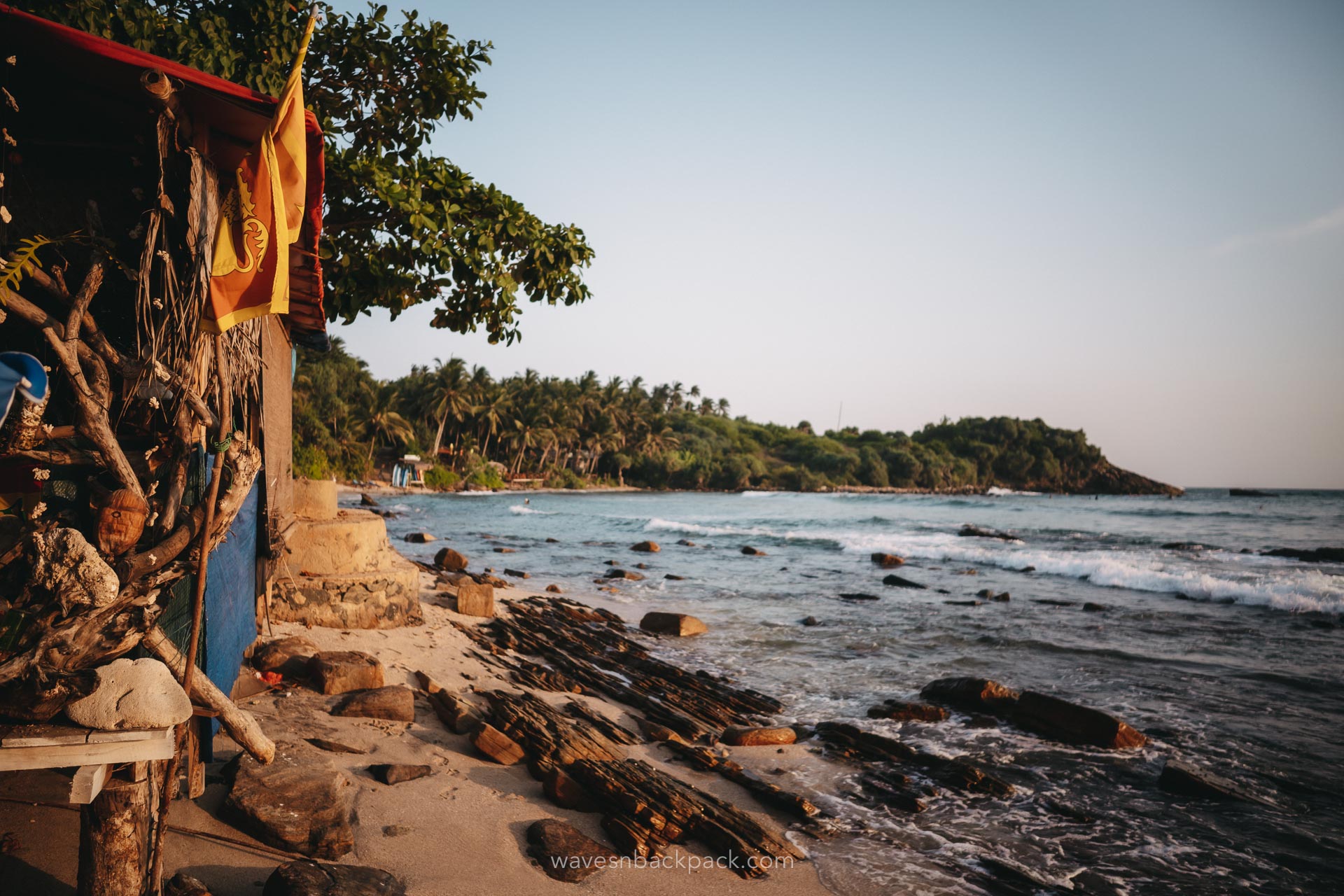
The best time to travel to Sri Lanka is between October and mid April. In this period you will hardly see clouds or rain and you will be able to enjoy the tropical climate in the west. Whereas monsoon “Maha” brings rain in the east. From May until October you have time to explore the North-East due to “Yala” the monsoon in south west. In the west, May and October usually have the highest amount of rainfall, the same applies for November and December in the North-East. The whole year Sri Lanka has a tropical and humid climate. January is considered to be the “coldest” months and March and April the hottest.
In the interior of the country temperatures are significantly lower as on the coasts. While you are looking for shadow in Hikkaduwa (around 31°C), Nuwara Eliya welcomes you with refreshing 20°C and the summit of Adam’s Peak forces you to get out your jacket with around 5-10°C.

Our tip here is not to visit Sri Lanka during high season to avoid increasing prices and overcrowded beaches. We started our trip through Sri Lanka in the beginning of April and were really lucky with the weather. At our last stop, Hikkaduwa, the beaches were pretty empty already and hostels closed thus we could feel the approaching end of the season. Having said that, we would tend to say that March and April are the perfect months for backpacking in Sri Lanka.
Transport in Sri Lanka
While traveling in Sri Lanka you need to rely on public transport. The most common way of transport for short distances is the three-wheeled Tuk-Tuk. If you prefer taxi van’s over Tuk-Tuk’s or scooters taxis can be rented in advance in every bigger city at travel agencies such as Travel Choice.
For longer distances we can recommend taking the train (especially on your ways between Kandy > Colombo > Matara), which is not only convenient but also an adventure being part of Sri Lanka’s society.
Generally we can say: Bus and train rides are extremely cheap and mostly convenient. The taxi is normally faster but significantly more expensive. More info on driving Tuk-Tuk you can find here:
Food in Sri Lanka
Once you try Sri Lanka’s food the first time, you will notice pretty soon, it is different. Similar to the Indian kitchen the food is often pretty spicy and you will notice a lot of different tastes of curry. If you do not like spicy food you should tell the waiter in advance. Especially in “touristy” places, restaurants are used to Western taste so that they ask how spicy your food is supposed to be.
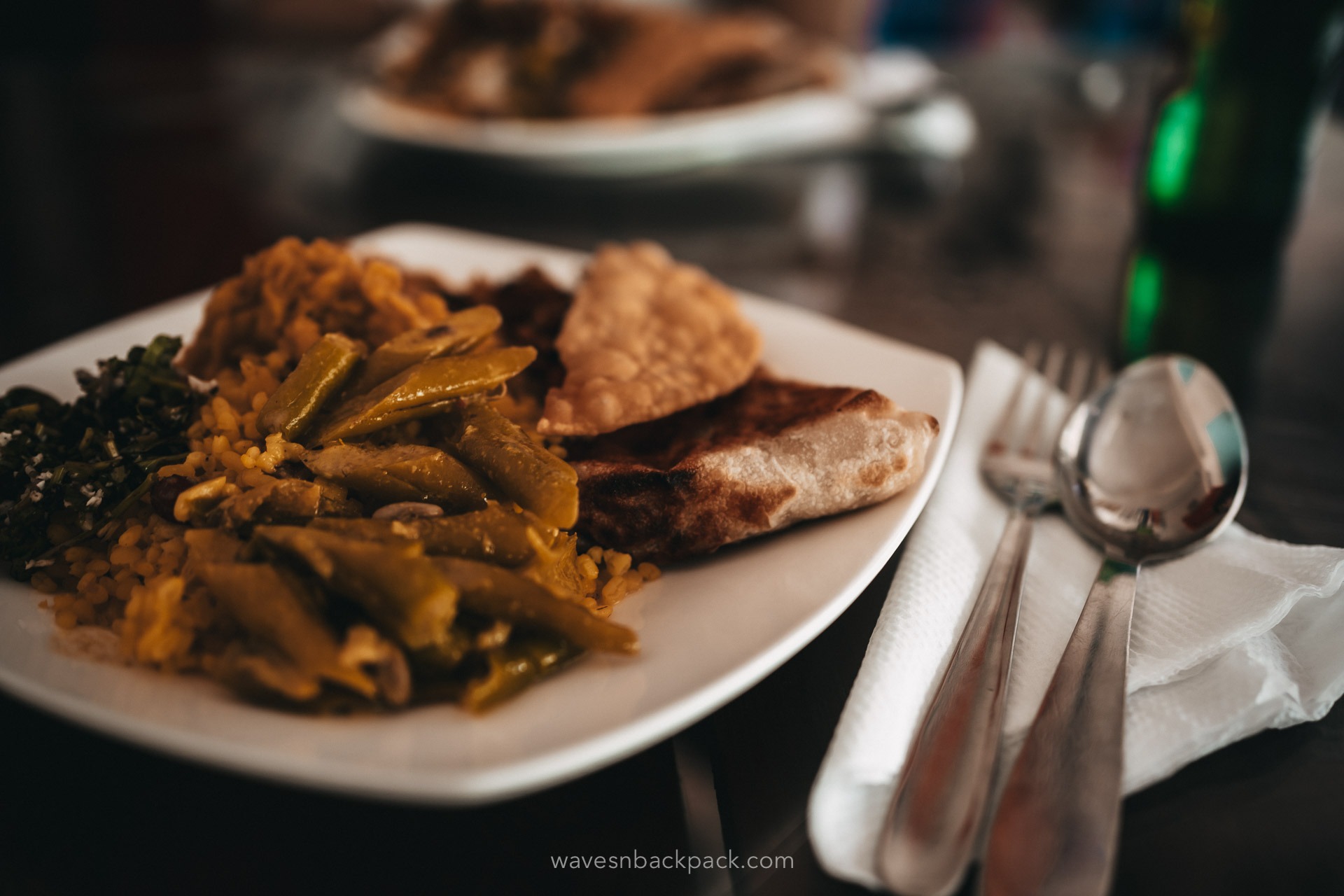
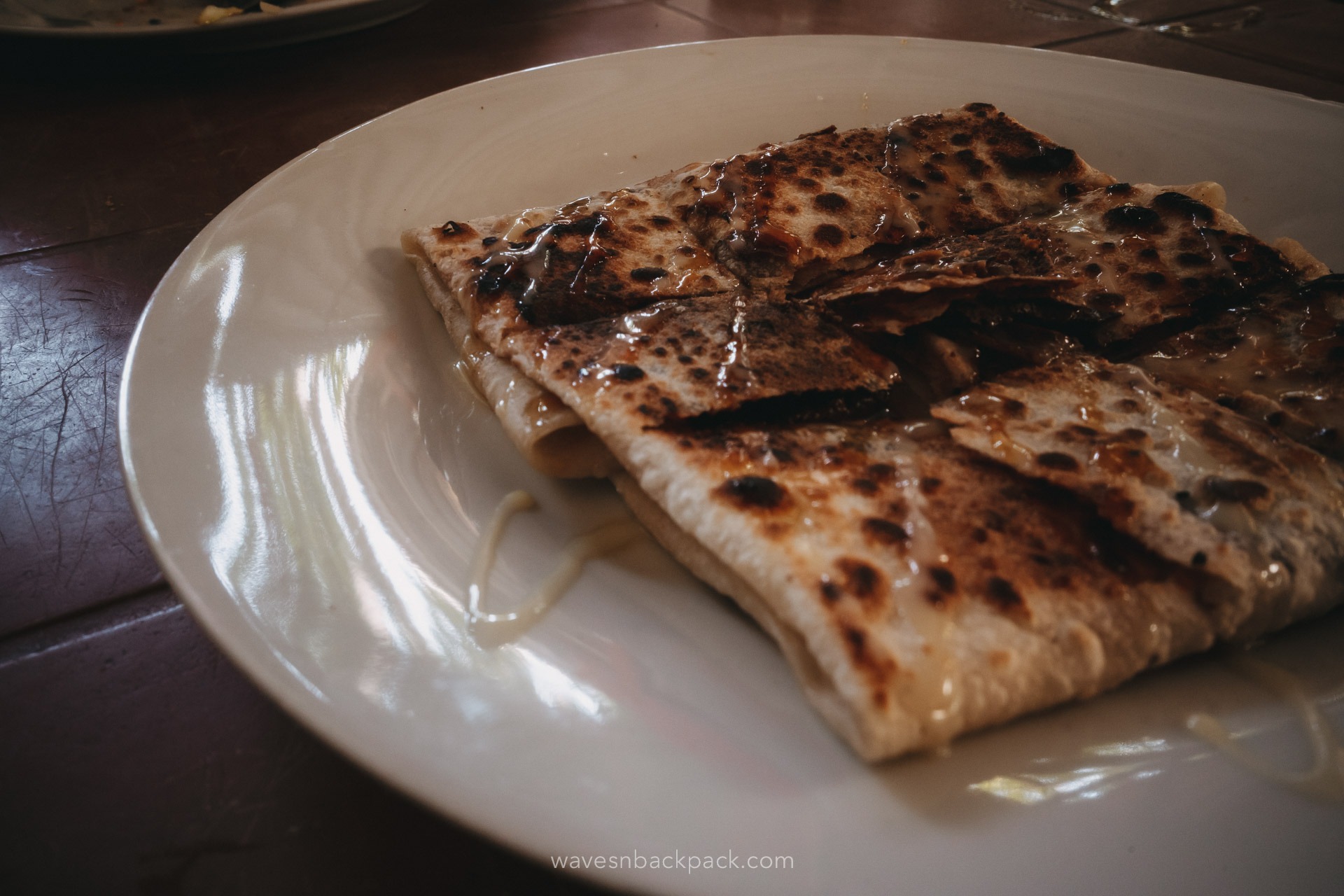
Specialties are mostly Rice & Curry (often served vegetarian too), Papadam (deep fried lentil flour dough), String Hoppers (dough noodles) and the often served Rotti (bread with various fillings).
Once Rotti is chopped and mixed with vegetables, eggs or meat (or, buckle up: with: peanut butter and chocolate), it’s called Kotthu Rotti.
On top of that you will find delicious buffalo milk yoghurts, Ceylon- tea and Arrak (Coconut liqueur).
Being vegetarian will not be a problem in Sri Lanka as many meals are served without meat. Typical for Sri Lanka are healthy and light meals with many variations of fruit and vegetables. While backpacking in Sri Lanka the delicious food is definitely one of the best things:
Accommodation in Sri Lanka
Sri Lanka offers a great variety of hostels, hotels and guest houses.
Important note while planning your trip that it is not as cheap as Thailand, Cambodia and Indonesia.
Backpacking in Sri Lanka means that you need to calculate 20-25$ on average per night per room. Obviously, you always can spend more but we would not recommend to stay in rooms under 15$.
By the way, we mainly book our accommodations for our travels through Booking and have already reached Genius Level 3. This allows us to get up to 20% off participating accommodations and enjoy free room upgrades or complimentary breakfast since reaching Level 2. We can highly recommend using this platform. 🫰🏼
Are you still looking for accommodation for your trip to Sri Lanka? Then find your favorite here:
Sports and Surfing in Sri Lanka
Cricket is not only very famous in Ireland and India you will also see a lot of people playing cricket on the streets or at the beach. Sri Lanka’s national team counts as one of the best cricket teams in the world and achieved great success in the beginning of the 1990s.
Besides that, surfing is a further very famous sport on the teardrop island. Arugam Bay as well as numerous different great surf spots make Sri Lanka a Mecca for surfers. More on Surfing in Sri Lanka you can find here:
➳ Sri Lanka – Kottu Roti and mellow waves
Language and Communication in Sri Lanka
Sri Lanka is a melting pot of cultures and religions. Approximately 60% of the population are Sinhalese and thus belong to the Buddhist part. Another 18% are Tamils that follow Hinduism and the remaining 20% are Christians.
Henceforth, Sri Lanka has two officialese languages which are Tamil and Sinhalese. The possibility to communicate in English depends a lot of the area and people you talk to. In rural areas it is hardly possible whereas in more touristy places communicating in English is no problem. Sometimes you need gestures to get your point clear but in the end everything will work out and a little smile will alleviate all problems you had in the conversation. After a few days in Sri Lanka you will notice the unusual way on how locals shake their heads. Moving the head from the left to the right means something like “ok” or “agreed”.
Locals in Sri Lanka
The majority of locals in Sri Lanka are friendly and have a pleasing manner that makes the stay nice and relaxing. Especially people we met in the inland were unbelievably friendly and positive.

Nevertheless, tourists should be clear that from many people’s’ perspective are considered to be very wealthy. Sometime while bargaining you feel like a “source of income”. In fairness you should think if it is really necessary to bargain for the last 100 LKR (which is less than an Euro). Bargaining is necessary most of the times to get a fair price but you still should not be too cheap with the price you want to pay.
Packlist Sri Lanka
While traveling in Sri Lanka you need a handful of things. We have been really happy about having these essentials and we want to share those with you.
- A travel sheet* is a combination of a light sleeping bag and beddings. The Egyptian Cotton allows air to pass and thus sleeping is still enjoyable in the tropics. Absolute must-have from our perspective.
- A waist bag* is ideal to store your most important documents safely. In Sri Lanka as well in every other country you will find pickpockets in crowded places, so better store your valuables such as your passport and credit card close to your body.
- Beside your backpack you need a daypack. Here 17-22 litres are ideal. Julian fell in love with his 5.11 Tactical* that is actually used in the US military and Ani has a Tatonka Sparrow 19, she really likes.
- Especially in Mirissa snorkelling is great and when you are in Sri Lanka already you should try surfing. For these reasons an Action Cam is great to capture the best moments. Here* you will find a great alternative to the GoPro.
Summing things up we can just say that backpacking in Sri Lanka was an amazing experience with great landscapes, impressive highlands and white sand beaches. Where to go depends exactly on the time you want to visit beautiful Sri Lanka. As the tear drop island is comparatively small, you will be able to see a lot in a two to three week trip. The less time the better you should be prepared to make the best of your time.
You have read our article and you have been in Sri Lanka afterwards? Please let us know what you liked best. Happy travels!
*Affiliate-Link | When booking, we receive a small commission, without any extra costs for you!
Still looking for Wanderlust?
➳ You are still not sure which places to visit while traveling Sri Lanka? Have a look at our Sri Lanka Travel Route!
➳ You are looking for our Sri Lanka Budget Backpacking Tips?
➳ Or are you interested in our Sri Lanka Highlights?
➳ You can’t decide which National Park to visit in Sri Lanka?
➳ Before heading to Sri Lanka get a glimpse into Sri Lanka’s food!
➳ Last but not least here you will find the best matter of transport and more info about driving tuk tuk in Sri Lanka!

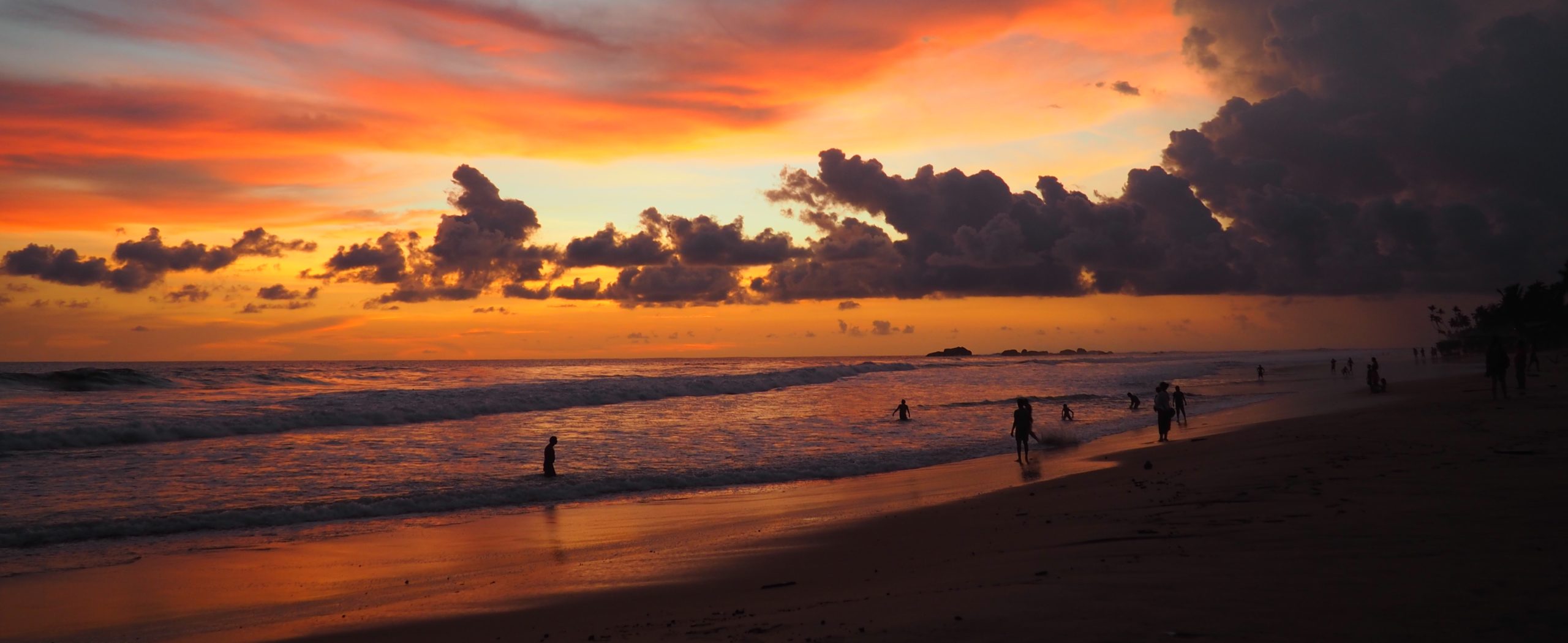
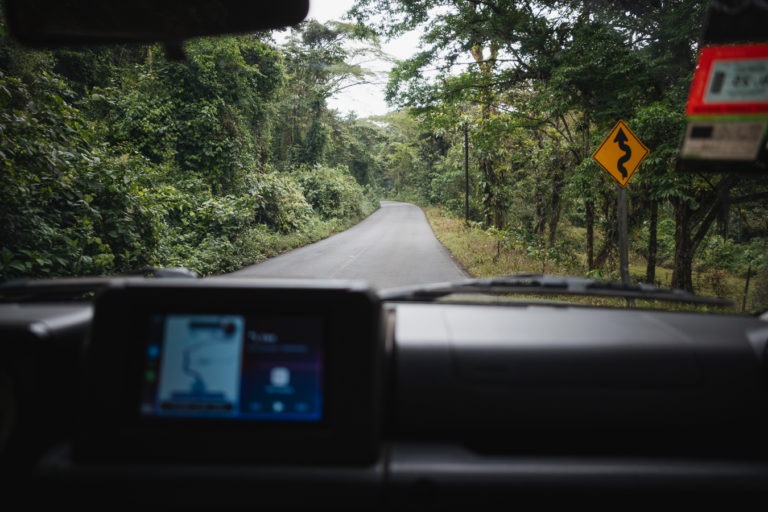
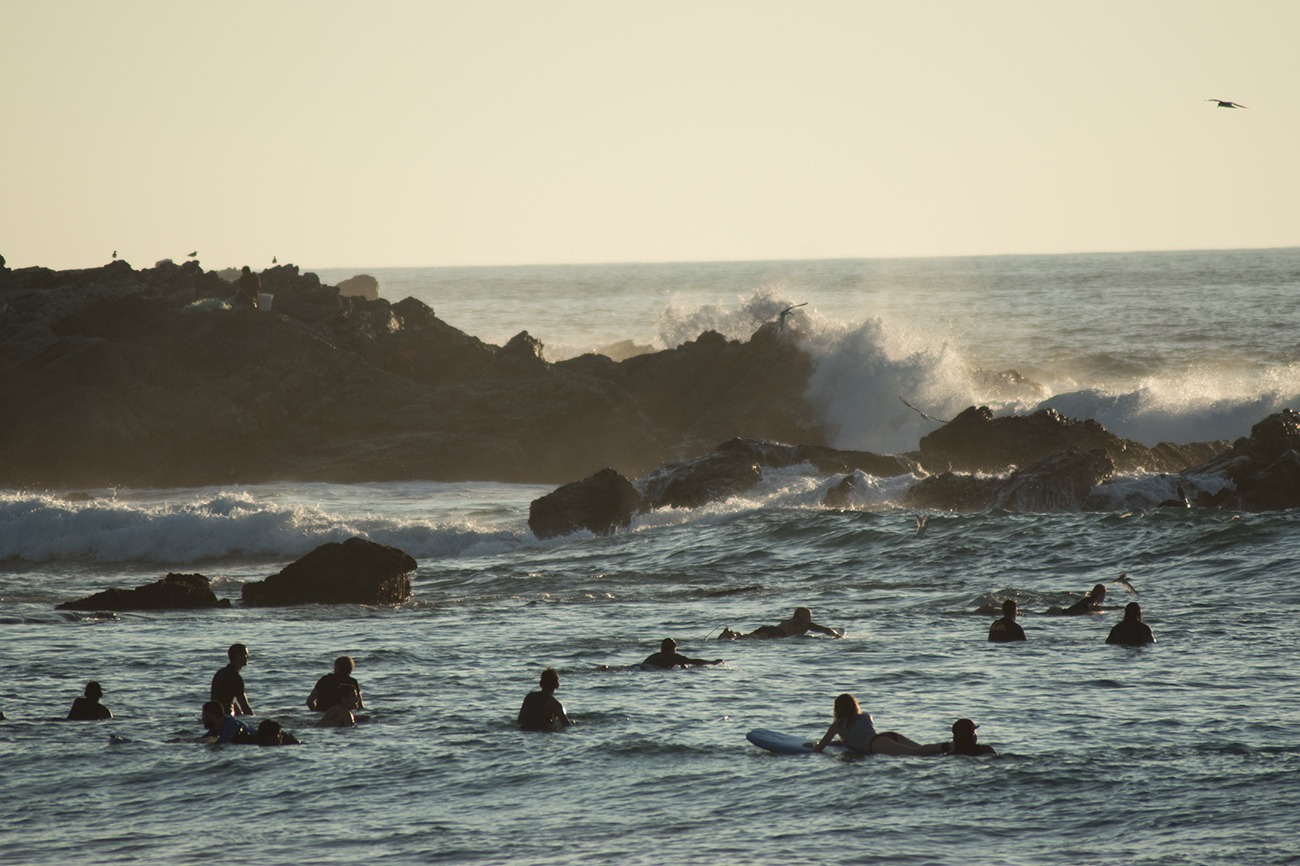
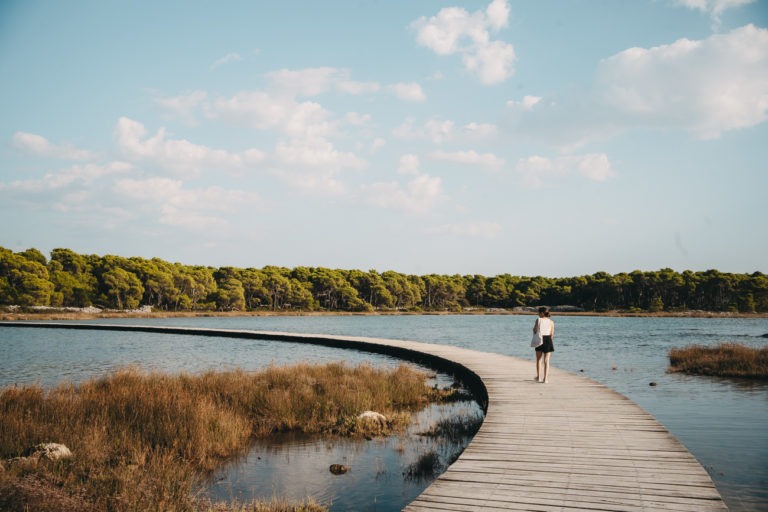
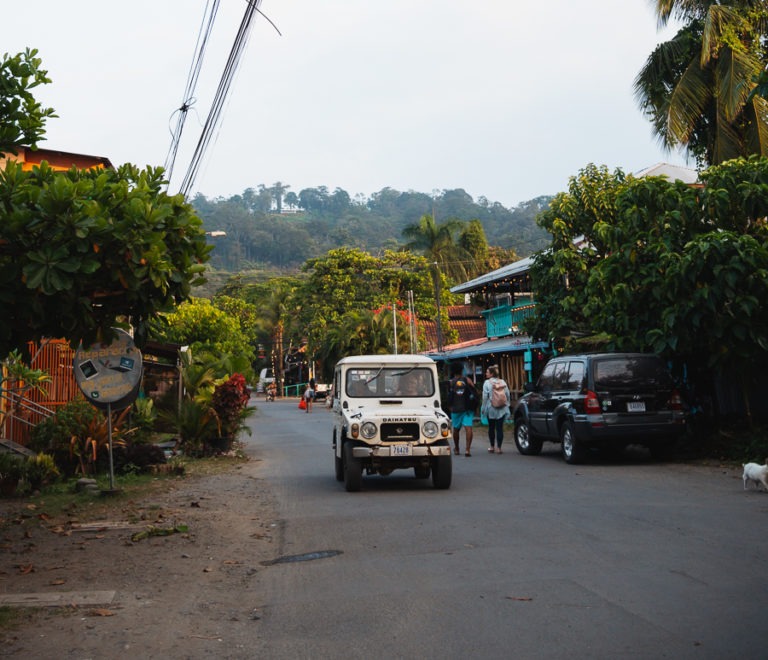
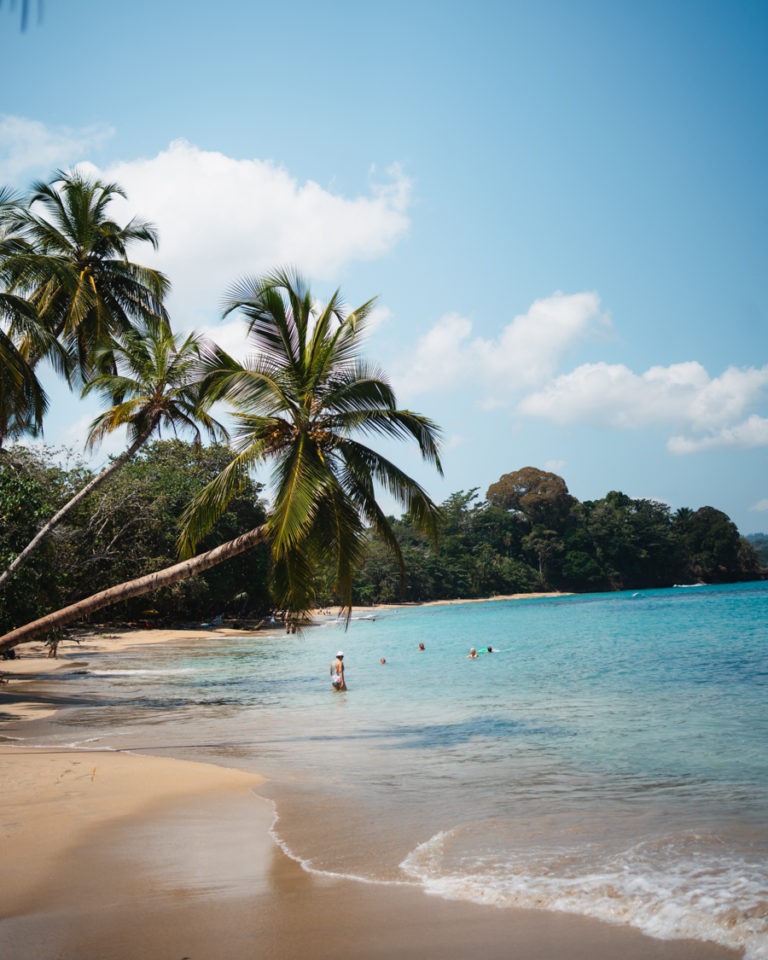
2 Responses
What was the budget for this trip?
How much would you expect to spend on a trip like this, excluding food and drinks?
Hey Kaeya, that depends a little bit on factors like accommodation, type of transportation, restaurant etc. and amount of activities. On a budget round about 200-400 USD weekly per person inkl. food and drinks – not including flights. Hope that helps 🙂
Cheers, Ani